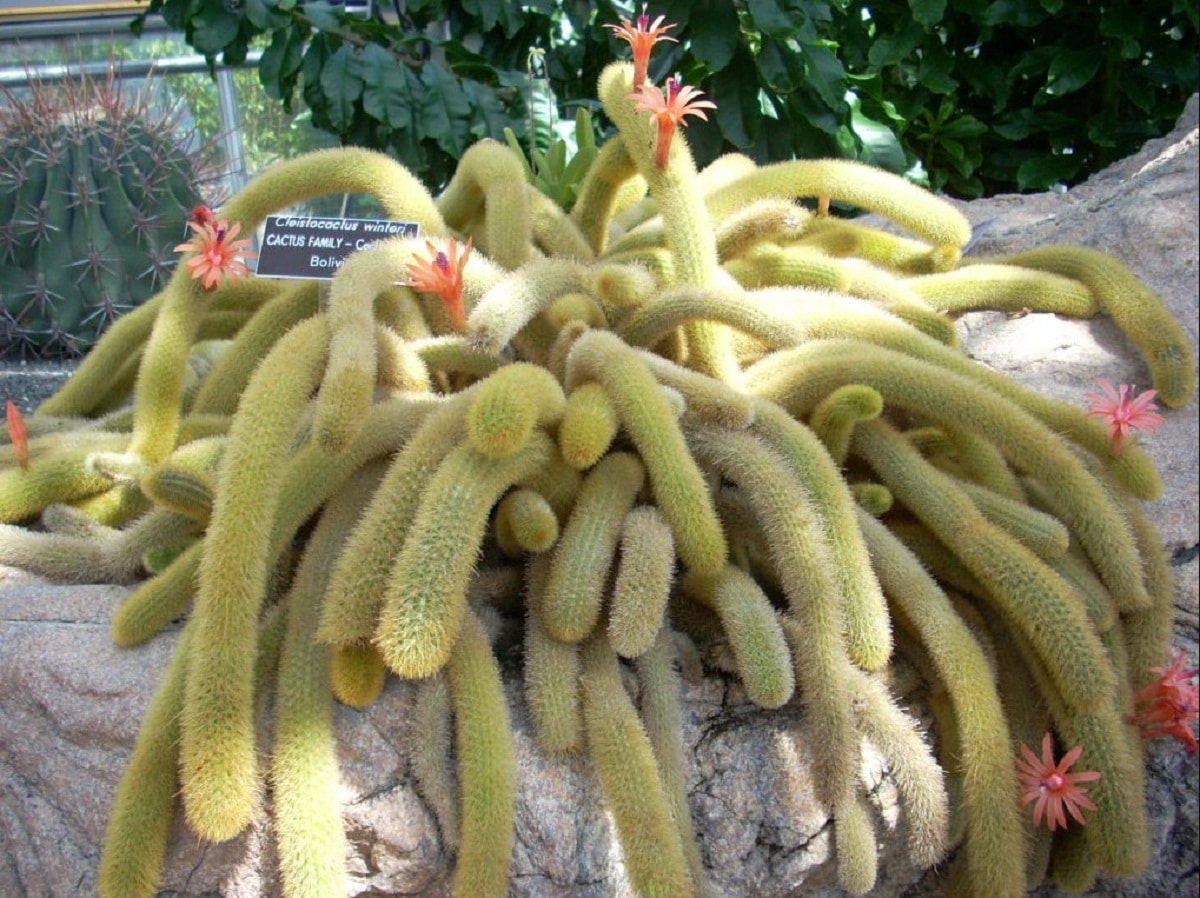
The scientific name of the hanging cactus es Disocactus flagelliformis and it is also popularly known as rat tail cactus. It has a high ornamental value so it is common to see them in gardens displaying very showy and bright flowers.
This beauty is typical of some regions of Central America and Mexico. In its natural habitat it grows on sandy substrates and in stony areas, let's see below what are the main characteristics of this plant and how are the minimum care required to enjoy them in your garden.
Characteristics of the hanging cactus

The plant is made up of elongated and cylindrical cacti that as they grow they spread downwards, these acquire a color between light green or grayish green and they are provided with thorns. From these hanging stems, beautiful, brightly colored flowers emerge in shades of pink, purple and red.
This hanging shape is what makes them perfect for terraces., baskets, planters and balconies, filling any space where they are with color. Cacti grow and give a tangled and impenetrable appearance, which is very typical of this type of plant, which also makes them look very leafy.
The spines are quite bushy, are distinguished by their golden hue and their length of just 0,5 cm. Like any fleshy plant, these store water in their stems which allows them to survive dry seasons, adding greater ease to home care.
Care
The truth is that it is a very simple plant to care forHowever, you must pay attention to these recommendations so that your hanging cactus grows strong and healthy and preserves that vital aspect that attracts so much attention.
Acquire a special substrate for succulents and cactiWhen you plan to place them in baskets, it is important that you do not fill them to the top of the ground. This type of substrate perfectly emulates that of its natural habitat, which consists of well-drained soils, mostly stony, which favor its development and avoid waterlogging.
It is because of that irrigation is only applied twice a week In spring and summer seasons, when winter arrives it does not require watering, which will promote successful flowering. To fertilize the soil you can apply worm humus periodically, which will be more than enough.
You need continuous exposure to the sun, although not directly in case you are growing it at home, the ideal average temperature is 18º, however in its natural environment it is capable of withstanding much higher temperatures of even 30º.
You should avoid direct exposure to the midday sun. When this cactus is under home care, it is important that it is well protected from frosty seasons. The way to propagate these plants is through the cuttings, once cut from the mother it is important to let them dry for a few days until they are healed.

The best part is that these fleshy plants don't need to be pruned. If the plant has had the due winter rest, they will appear in the spring (late), always on the shoots of a previous one. It should be noted that when it comes to young specimens, the flowers will appear at the apex of the plant.
The stems are usually thin measuring up to 2 centimeters in diameter. and they can measure up to 2 meters long. These, when the plant is still very young, are of a beautiful light green color but with time it is that they acquire that greyish green that is also very characteristic of them.
It has areolas that can be white or gray which cover the whole body, They are small and 6 to 8 mm apart. When properly cared for, they last up to 10 years and even a little longer and if you want them to look at their best, there is nothing like placing them in hanging terrines to decorate terraces, balconies, gardens, etc.